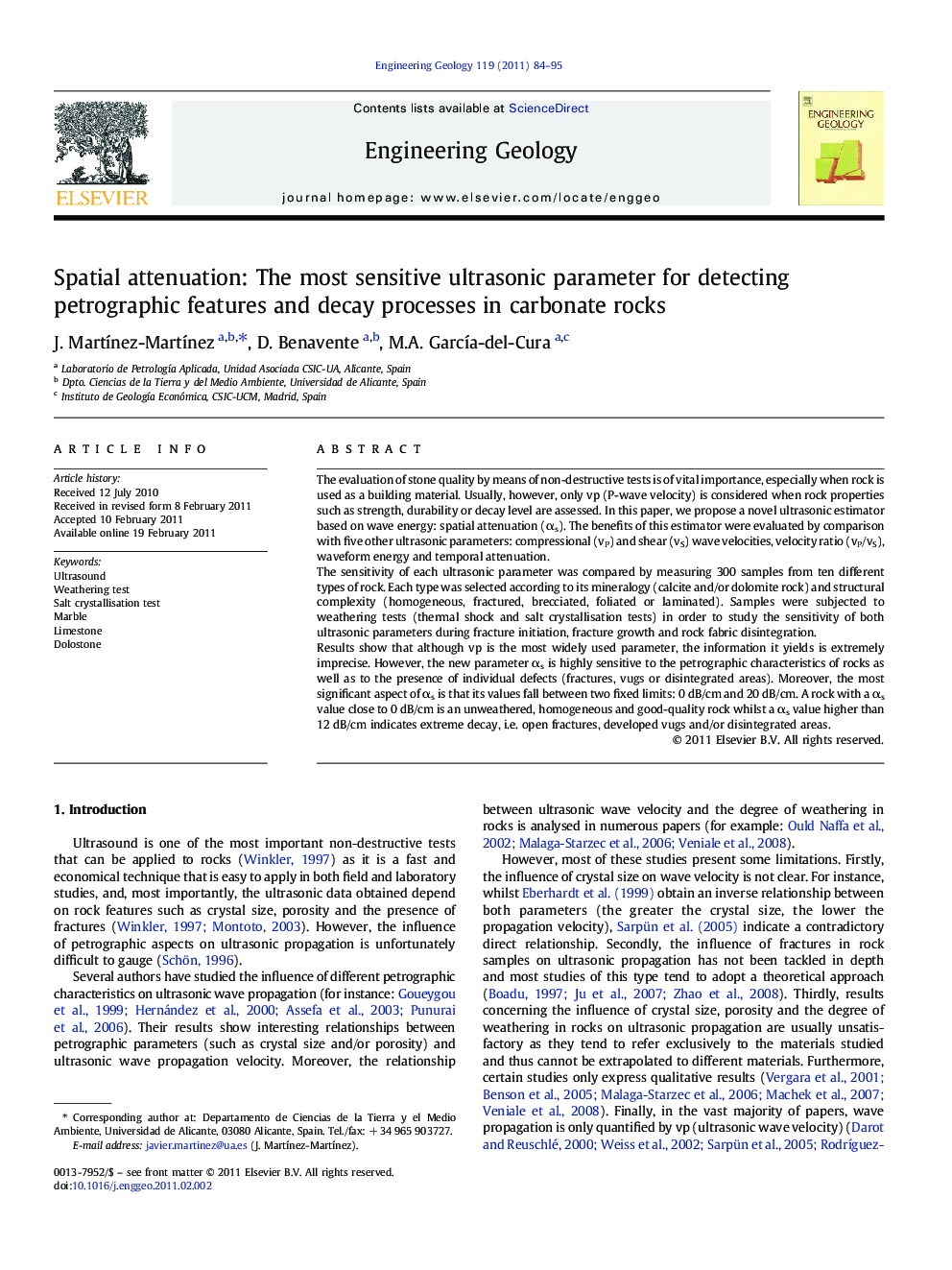| Article ID | Journal | Published Year | Pages | File Type |
|---|---|---|---|---|
| 4744155 | Engineering Geology | 2011 | 12 Pages |
The evaluation of stone quality by means of non-destructive tests is of vital importance, especially when rock is used as a building material. Usually, however, only vp (P-wave velocity) is considered when rock properties such as strength, durability or decay level are assessed. In this paper, we propose a novel ultrasonic estimator based on wave energy: spatial attenuation (αs). The benefits of this estimator were evaluated by comparison with five other ultrasonic parameters: compressional (vP) and shear (vS) wave velocities, velocity ratio (vP/vS), waveform energy and temporal attenuation.The sensitivity of each ultrasonic parameter was compared by measuring 300 samples from ten different types of rock. Each type was selected according to its mineralogy (calcite and/or dolomite rock) and structural complexity (homogeneous, fractured, brecciated, foliated or laminated). Samples were subjected to weathering tests (thermal shock and salt crystallisation tests) in order to study the sensitivity of both ultrasonic parameters during fracture initiation, fracture growth and rock fabric disintegration.Results show that although vp is the most widely used parameter, the information it yields is extremely imprecise. However, the new parameter αs is highly sensitive to the petrographic characteristics of rocks as well as to the presence of individual defects (fractures, vugs or disintegrated areas). Moreover, the most significant aspect of αs is that its values fall between two fixed limits: 0 dB/cm and 20 dB/cm. A rock with a αs value close to 0 dB/cm is an unweathered, homogeneous and good-quality rock whilst a αs value higher than 12 dB/cm indicates extreme decay, i.e. open fractures, developed vugs and/or disintegrated areas.
Research Highlights► This work introduces a new ultrasonic parameter that quantifies the wave energy. ► 300 samples with different degree of defects and weathering were tested. ► Sensitivity of s and vp for detecting defects and weathering rocks was analysed. ► The use of vp to evaluate the rock fabric and rock weathering is questioned. ► A new rock classification using s values is proposed.
